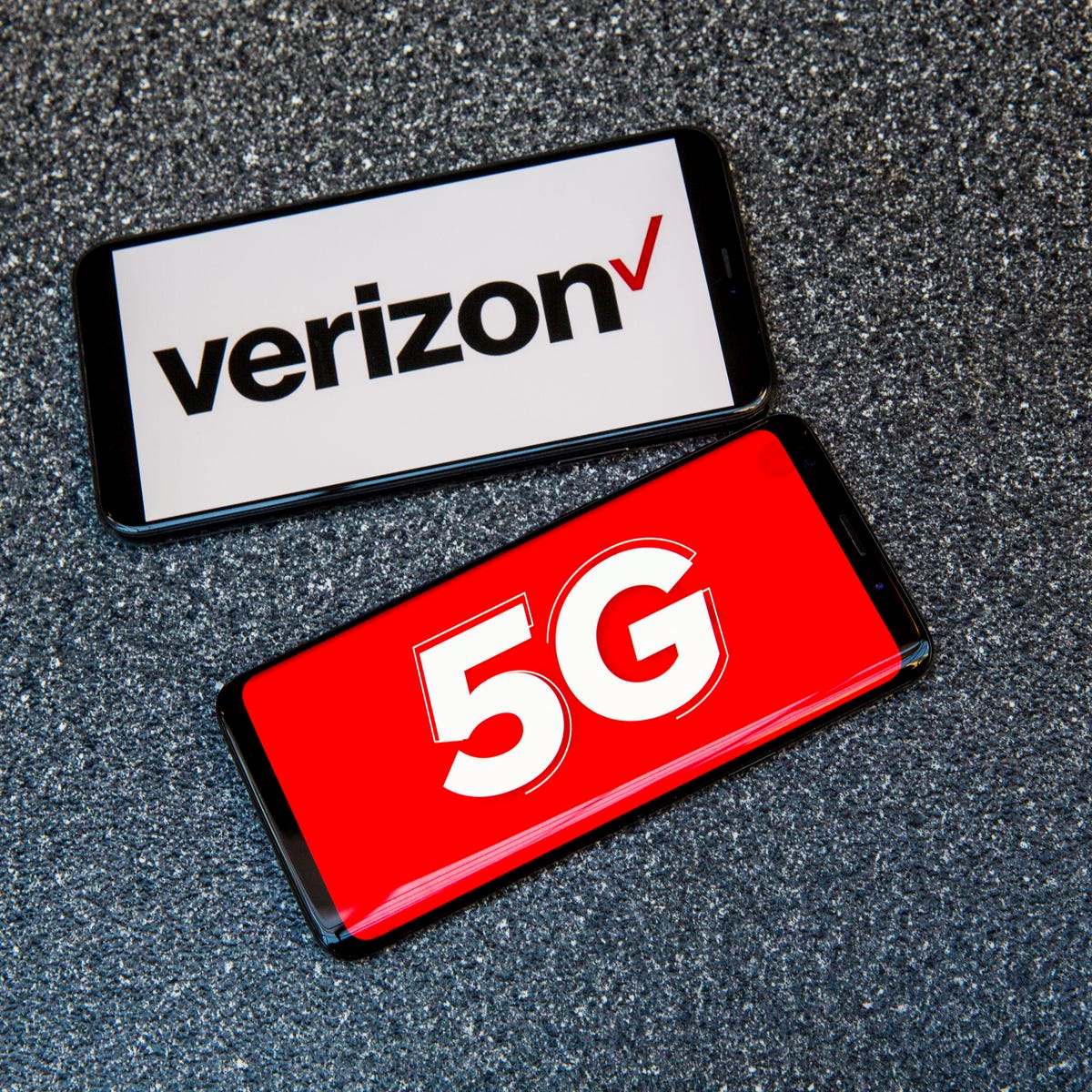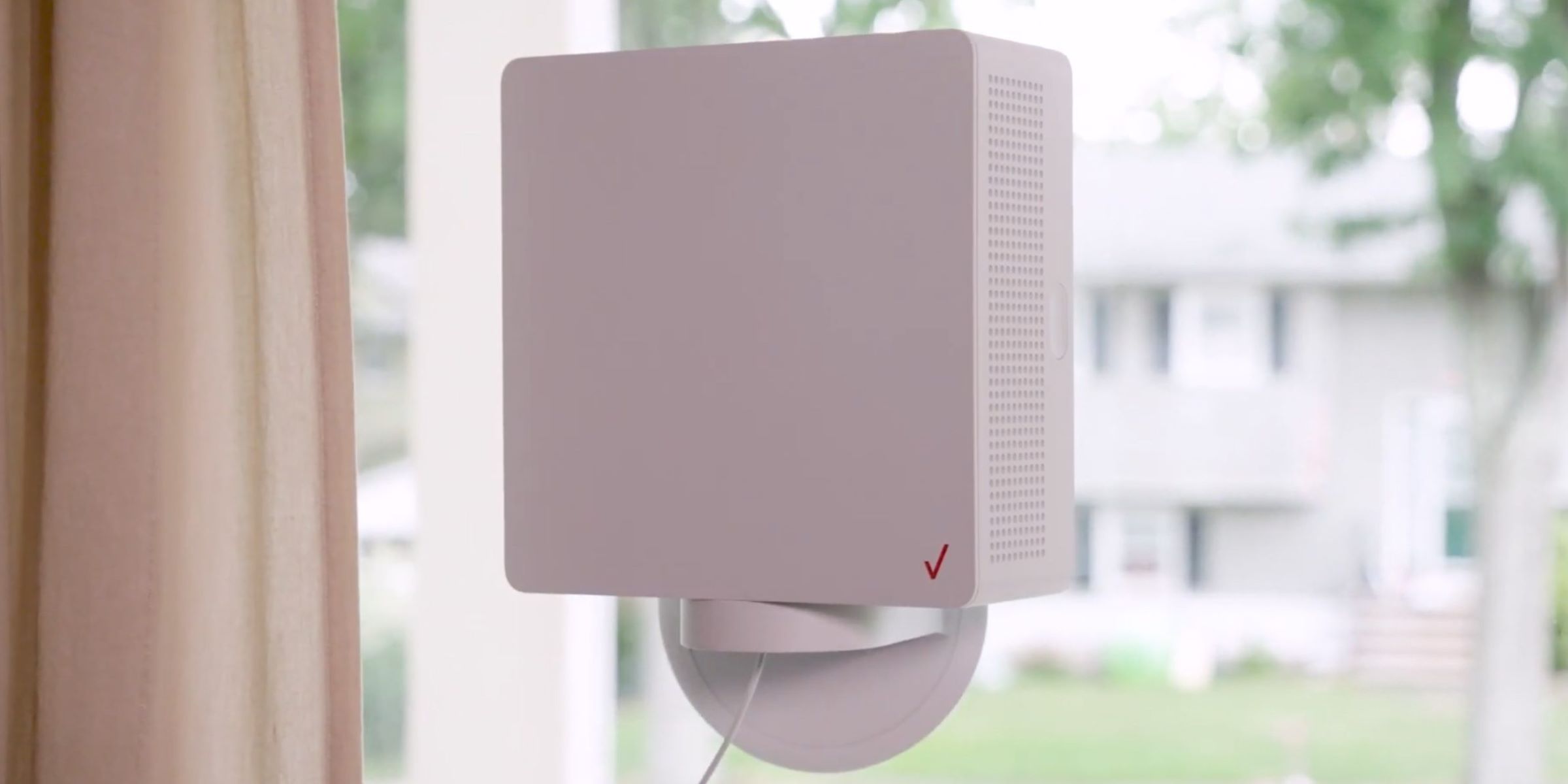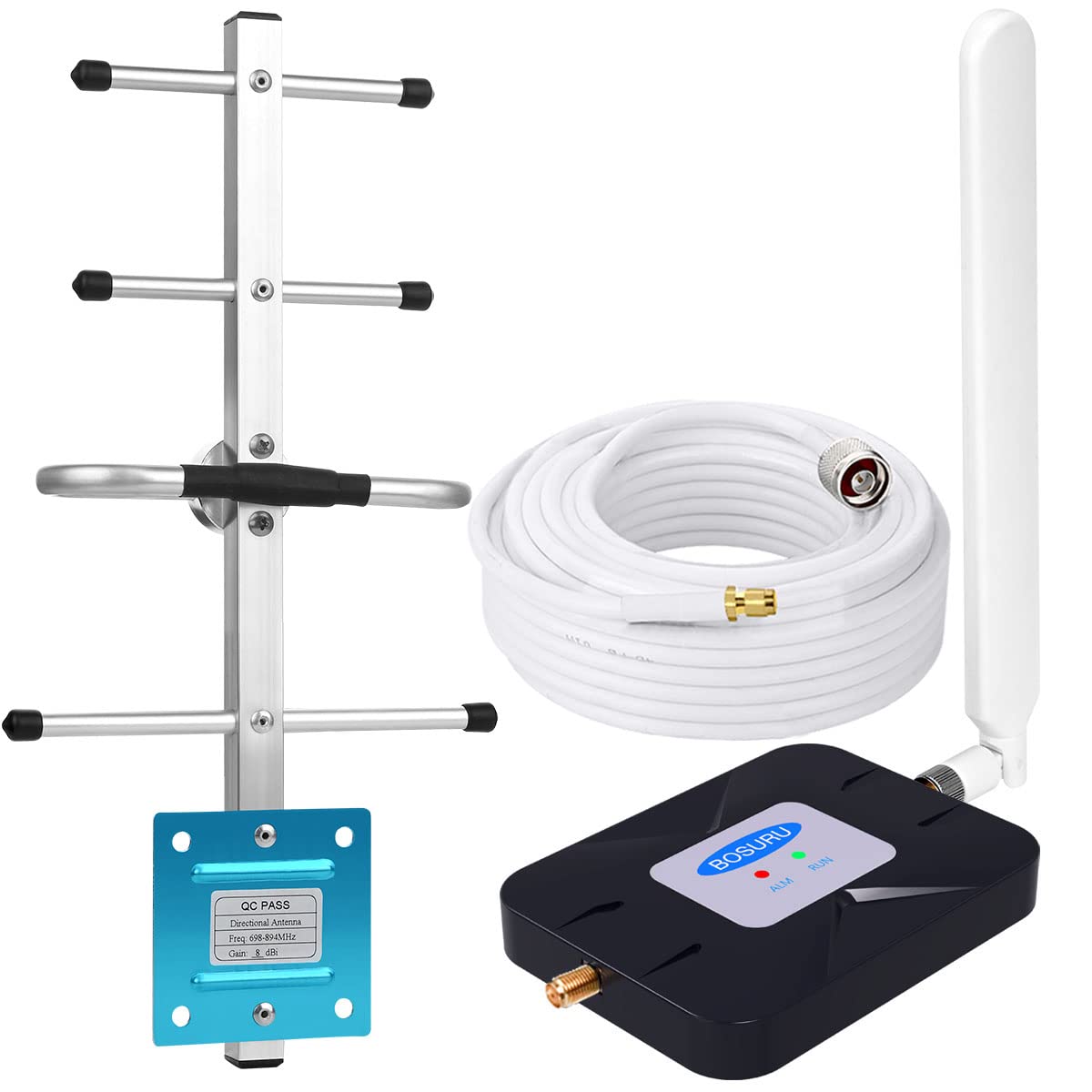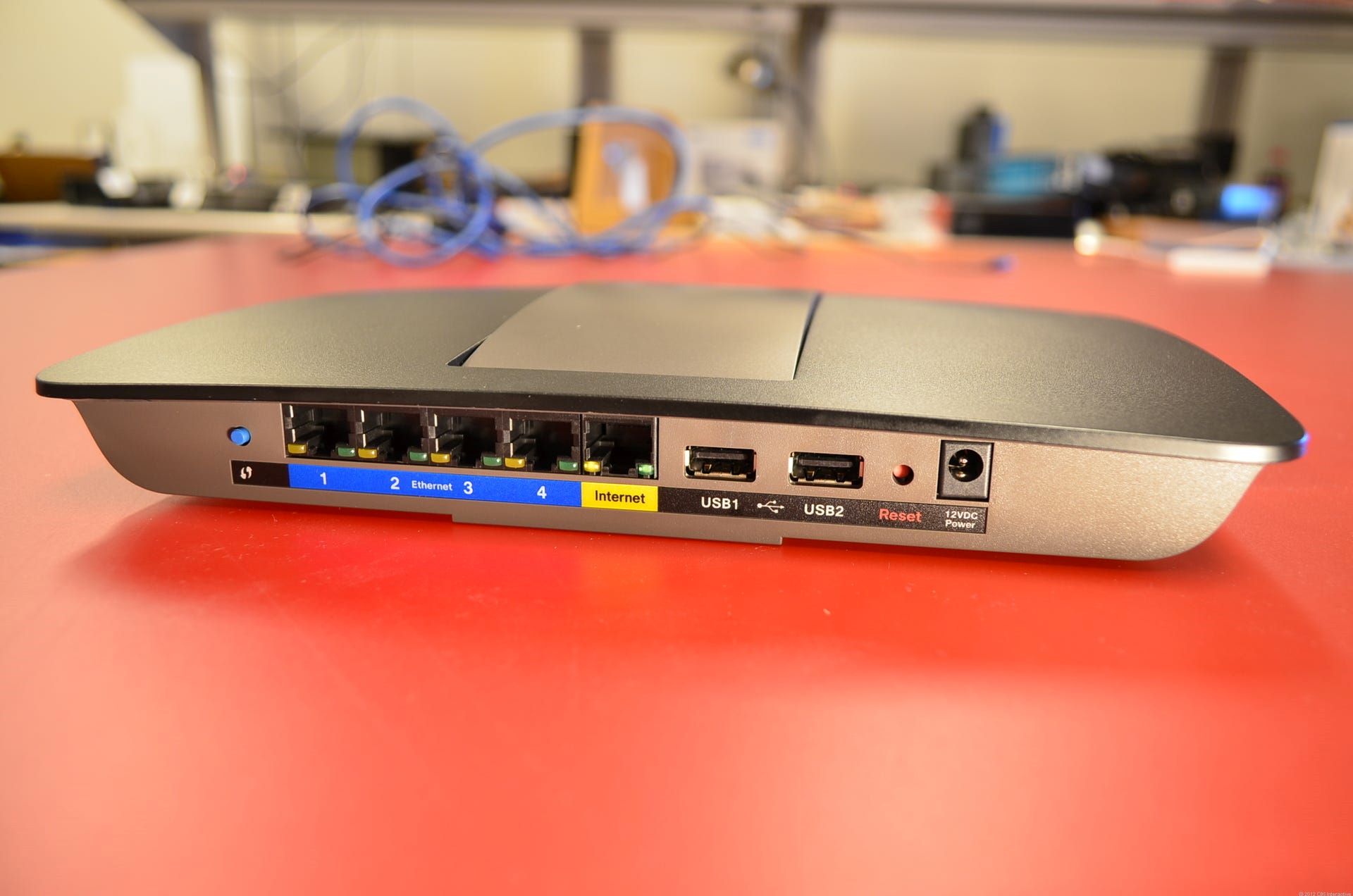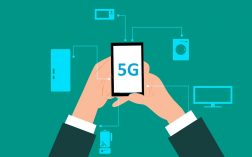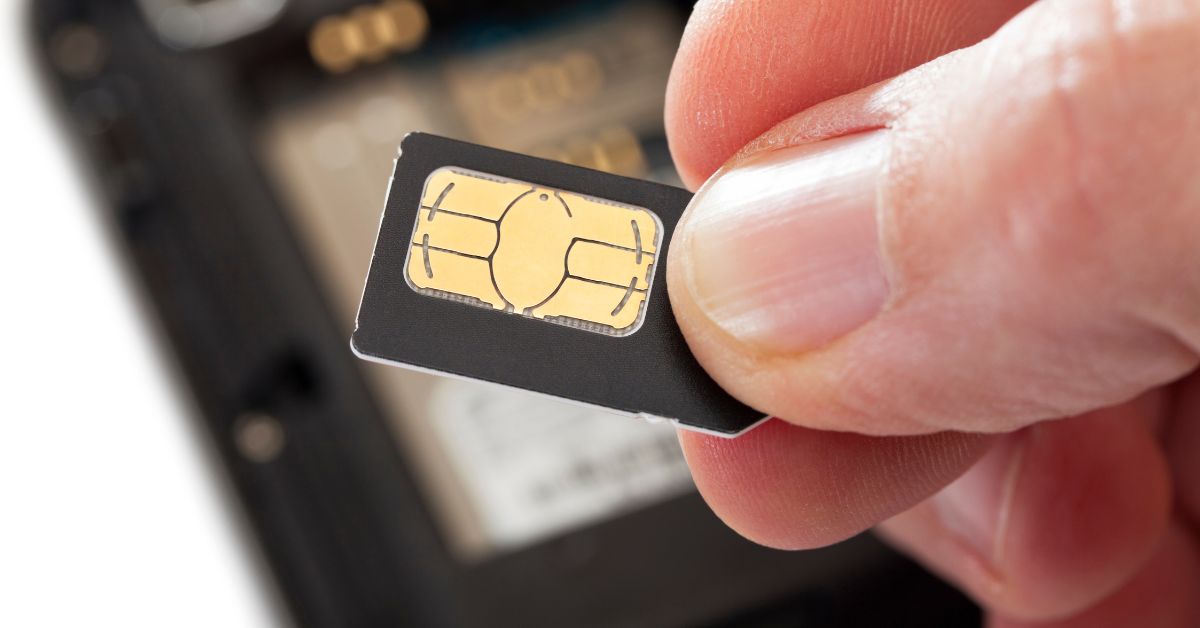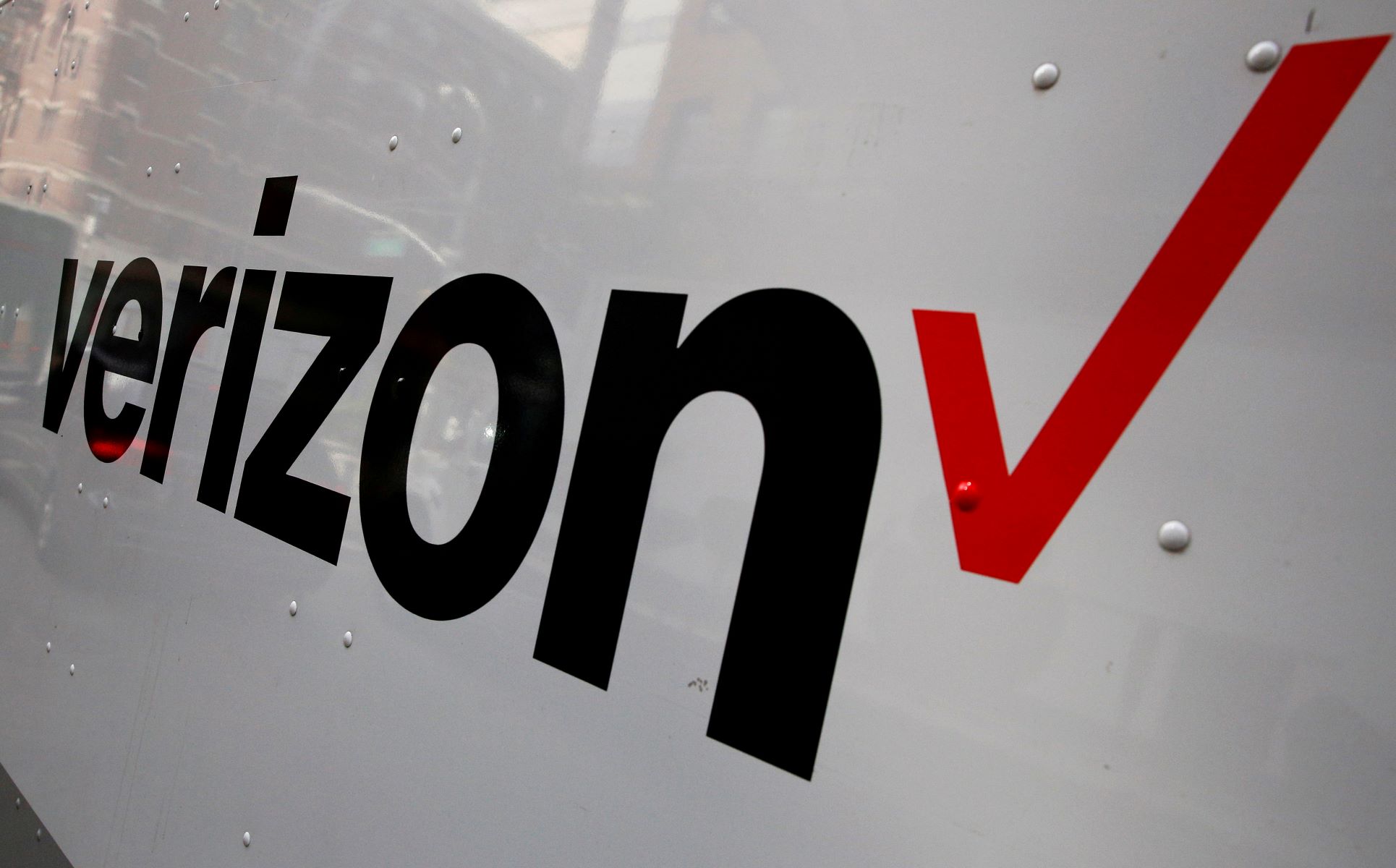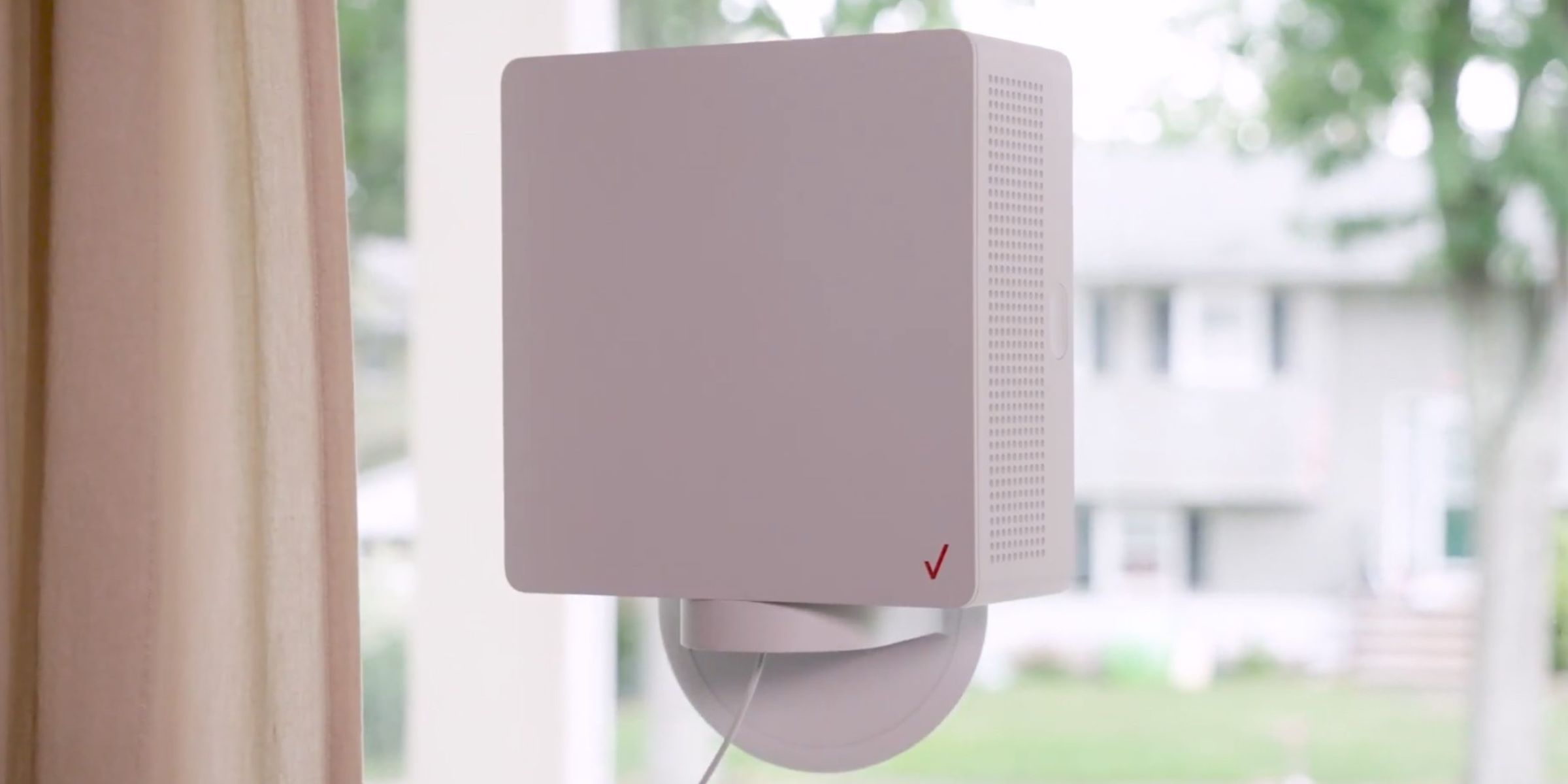Introduction
With technology advancing at a rapid pace, the era of 5G is upon us. This fifth-generation wireless network promises to revolutionize the way we connect and communicate, offering unprecedented speed, capacity, and reliability. As one of the leading telecommunication companies, Verizon has been at the forefront of the 5G revolution, spearheading the development and deployment of this cutting-edge technology.
In this article, we will delve into the world of 5G and explore Verizon’s efforts in bringing this groundbreaking innovation to the masses. From the basics of what 5G is to the specific offerings of Verizon’s 5G network, we will provide an in-depth understanding of this transformative technology.
Gone are the days of waiting impatiently for web pages to load or experiencing lags and buffering during video streaming. 5G is here to offer lightning-fast download and upload speeds, enabling seamless connectivity and a more immersive online experience. In addition to super-fast internet browsing, this technology promises to unleash the potential of emerging technologies such as virtual reality (VR), augmented reality (AR), and the Internet of Things (IoT). By enabling near real-time interaction and ultra-low latency, 5G will fuel innovation and drive digital transformation in various sectors, including healthcare, transport, manufacturing, and entertainment.
But how does 5G differ from its predecessors? It is important to note that 5G is not just an incremental improvement over 4G; it represents a significant leap forward. While 4G primarily focused on providing faster internet speeds for smartphones, 5G is designed to connect everything – from smartphones and tablets to smart devices and even autonomous vehicles. It facilitates massive data transfer at astonishing speeds, supports a vast number of simultaneous connections, and offers ultra-reliable and low-latency communication.
Verizon, being one of the pioneers in the telecommunications industry, has been actively investing in the development and roll-out of its 5G network. With a commitment to harnessing the power of 5G to transform industries and improve people’s lives, Verizon aims to build the most extensive and reliable 5G network in the country. Through strategic partnerships and collaborations, Verizon continues to expand its 5G coverage, making it accessible to more communities and businesses across the nation.
In the following sections, we will explore the technical workings of 5G, the benefits it brings, and specifically, Verizon’s 5G Start, a program aimed at making 5G accessible to entrepreneurs and businesses. So, let’s dive deeper into the world of 5G and discover the endless possibilities that await us.
What is 5G?
5G, short for fifth-generation, refers to the latest and most advanced wireless network technology that offers significant improvements over its predecessors. It aims to transform the way we connect and communicate by delivering faster speeds, lower latency, and increased capacity. Unlike previous generations, 5G is not only focused on mobile phones but has a broader scope, encompassing a wide range of devices and applications.
The fundamental goal of 5G is to provide users with an ultra-fast and seamless online experience. With speeds up to 100 times faster than 4G, 5G supports rapid data transfer, allowing for quicker download and upload speeds. This means that tasks that previously took minutes will now be completed in seconds, making activities like downloading movies, streaming high-definition videos, and online gaming more enjoyable and smoother.
One of the key features of 5G is its low latency, which refers to the time it takes for data to travel between a device and the network. The reduced latency provided by 5G networks will enable near real-time communication, making activities such as video conferencing, remote surgeries, and autonomous vehicle control possible with virtually no delay. This low latency will also enhance the functionality of emerging technologies like virtual reality and augmented reality, enabling more immersive and interactive experiences.
In addition to faster speeds and lower latency, 5G networks have the capacity to support a massive number of connected devices. This is especially important in the era of the Internet of Things (IoT), where an increasing number of devices are connected and communicating with each other. With 5G, the network can handle the massive volume of data generated by IoT devices efficiently, opening up new opportunities for various industries, including healthcare, transportation, agriculture, and smart cities.
5G operates on higher frequency bands, utilizing millimeter waves, which allows for increased capacity and faster speeds. However, these higher frequencies have limited reach and are easily attenuated by obstacles such as buildings and trees. To overcome this challenge, 5G networks deploy small cells, which are small base stations scattered throughout an area, ensuring better coverage and connectivity. These small cells work in conjunction with existing macro cells to deliver a consistent and robust network experience.
Overall, 5G holds enormous potential to shape our future in unparalleled ways. It will not only transform how we connect and communicate but also revolutionize industries and pave the way for innovative technologies. With its remarkable speed, low latency, and massive capacity, 5G will unlock new opportunities, drive digital transformation, and bring us closer to a truly connected and intelligent world.
The Evolution of Wireless Technology
From the humble beginnings of signal telegraphy to the lightning-fast speeds of 5G, wireless technology has come a long way in revolutionizing the way we communicate. Let’s take a journey through time and explore the evolution of wireless technology.
The journey begins with the invention of the telegraph in the early 19th century, which allowed messages to be transmitted over long distances using electrical signals. This laid the foundation for wireless communication by demonstrating the potential of transmitting information through electromagnetic waves. Building upon this concept, the development of radio technology in the late 19th century marked a breakthrough in wireless communication. Radio waves were utilized to transmit voice and music, enabling long-range communication without the need for physical wires.
The next significant advancement came in the form of the first-generation (1G) cellular network, introduced in the 1980s. 1G networks operated on analog technology and provided basic voice calling capabilities. However, these networks were limited in terms of capacity and quality, and their use was largely restricted to voice communication.
With the advent of the second-generation (2G) network, digital technology was introduced, paving the way for more advanced capabilities. 2G networks offered not only improved voice quality but also the ability to send text messages. This technology laid the foundation for the mobile revolution, making cell phones more accessible and affordable to the masses.
The third-generation (3G) network brought about a significant shift in wireless technology by introducing high-speed data communication. With 3G, mobile internet became a reality, allowing users to surf the web, send emails, and access various online services from their smartphones. This marked a turning point in the way people consumed information and interacted with the digital world.
Following the success of 3G, the fourth-generation (4G) network emerged, offering even faster data speeds and lower latency. With 4G, video calling, streaming, and downloading became seamless, paving the way for the rise of video sharing platforms, mobile gaming, and high-definition content consumption. The increased bandwidth and reliability of 4G made it the foundation for many emerging technologies, such as the Internet of Things (IoT) and smart devices.
And now, we find ourselves at the cusp of the fifth-generation (5G) revolution. 5G is set to take wireless technology to unprecedented heights, offering speeds of up to 100 times faster than 4G and enabling near real-time communication. With its ultra-low latency and massive capacity, 5G will transform industries, power emerging technologies like augmented reality and autonomous vehicles, and connect billions of devices in the Internet of Things.
The evolution of wireless technology has been driven by the constant pursuit of faster speeds, better connectivity, and enhanced functionality. Each generation has built upon the successes and limitations of its predecessor, continuously pushing the boundaries of what is possible.
As we stand on the threshold of the 5G era, we can only imagine the incredible possibilities that lie ahead. The journey of wireless technology continues, and with it, the promise of a more connected and innovative future.
Benefits of 5G
5G technology offers a multitude of benefits that will shape the way we live, work, and interact with the world around us. Let’s explore some of the key advantages of 5G and how they will transform various aspects of our lives.
1. Lightning-Fast Speeds: One of the most significant advantages of 5G is its unparalleled speed. With download and upload speeds up to 100 times faster than 4G, tasks that once took minutes will now be completed in seconds. This means lightning-fast downloads, seamless video streaming, and smooth online gaming experiences, providing users with a more immersive and enjoyable online journey.
2. Ultra-Low Latency: 5G networks offer incredibly low latency, meaning there is virtually no delay in transmitting data. This is especially crucial for applications that require real-time responsiveness, such as remote surgeries, autonomous vehicles, and industrial automation. The low latency of 5G will enable near real-time communication and interaction, opening up new possibilities in sectors like healthcare, transportation, and manufacturing.
3. Massive Connectivity: 5G networks have the capacity to handle a staggering number of simultaneous connections. This is crucial in the age of the Internet of Things (IoT), where billions of devices will be interconnected and communicating with each other. 5G will lay the foundation for smart homes, smart cities, and smart industries by providing reliable and efficient connectivity for a vast ecosystem of devices, leading to enhanced automation, efficiency, and convenience.
4. Enhanced Capacity: As our reliance on data-intensive applications and services grows, so does the demand for increased network capacity. With 5G, network operators can meet this demand by expanding their infrastructure to accommodate more users, devices, and data traffic. This means faster internet speeds for individuals, improved network performance during peak usage, and the ability to support emerging technologies that require massive bandwidth, such as virtual reality (VR), augmented reality (AR), and 4K video streaming.
5. Economic Impact: The deployment of 5G networks is expected to have a significant economic impact. According to a study by IHS Economics, by 2035, 5G technology will support up to $12.3 trillion worth of goods and services, creating millions of jobs across various sectors. The increased network capacity and speed of 5G will drive innovation, enable new business models, and stimulate economic growth, leading to improved productivity and competitiveness.
6. Innovation and Transformation: 5G technology will serve as a catalyst for innovation and digital transformation. It will unlock new possibilities, enabling advancements in fields such as healthcare, education, transportation, and entertainment. From remote medical procedures and personalized learning experiences to self-driving cars and immersive virtual reality, 5G will revolutionize industries and change the way we live and work.
In summary, the benefits of 5G are extensive and far-reaching. From lightning-fast speeds and ultra-low latency to massive connectivity and enhanced capacity, 5G will transform the way we connect, communicate, and experience the digital world. The advent of 5G opens up a multitude of opportunities for innovation, economic growth, and improved quality of life. As we embrace this transformative technology, the possibilities are endless.
How Does 5G Work?
5G technology operates on a combination of three key components: radio waves, small cell infrastructure, and advanced networking technologies. Let’s delve into each of these aspects to understand how 5G works.
1. Radio Waves: 5G utilizes a wide range of radio frequencies, including both lower frequency bands (sub-6GHz) and higher frequency bands (millimeter waves or mmWave). The use of these different frequencies allows 5G to strike a balance between coverage and capacity. Lower frequency bands provide broader coverage, allowing signals to travel over long distances and penetrate obstacles like buildings. In contrast, higher frequency bands offer higher capacity and faster speeds but have a shorter range and are more susceptible to interference.
2. Small Cell Infrastructure: To overcome the limitations of higher frequency bands, 5G networks rely on a dense network of small cells. These small cells are low-power base stations placed strategically throughout an area, often mounted on lampposts, buildings, or other infrastructure. By distributing small cells closer to users, 5G networks can compensate for the shorter range of higher frequencies and provide better coverage and connectivity. These small cells work together with existing macro cells to form a seamless network infrastructure.
3. Advanced Networking Technologies: Alongside the use of radio waves and small cells, 5G networks employ advanced networking technologies to optimize performance and deliver fast and reliable connections. One such technology is beamforming, which allows the network to focus the signal directly to the intended device, improving signal strength and reducing interference. Another key technology is network slicing, which enables the virtual partitioning of the network into multiple virtual networks, each tailored to specific applications or user requirements. Network slicing ensures that diverse services, such as autonomous vehicles and smart cities, can coexist on the same network without interfering with one another.
To facilitate the seamless transition from 4G to 5G, network operators are utilizing a technology called Non-Standalone (NSA) architecture. This approach combines the existing 4G infrastructure with 5G components to provide 5G services without the need for a complete overhaul of the entire network. As 5G adoption progresses, network operators will gradually shift towards the Standalone (SA) architecture, which relies solely on 5G infrastructure and provides the full benefits of the new technology.
Overall, 5G’s operation relies on a combination of radio waves, small cell infrastructure, and advanced networking technologies. By harnessing the potential of different frequency bands, optimizing network infrastructure, and leveraging cutting-edge networking techniques, 5G networks are capable of delivering unprecedented speed, ultra-low latency, massive connectivity, and enhanced capacity. This technological prowess is set to revolutionize industries, empower emerging technologies, and enable a truly connected and intelligent world.
Verizon’s 5G Network
As one of the leading telecommunications companies, Verizon has been at the forefront of the 5G revolution, investing heavily in the development and deployment of its 5G network. With a commitment to bringing the benefits of 5G to the masses, Verizon aims to build the most extensive and reliable 5G network in the United States.
Verizon’s 5G network operates on both the high frequency millimeter wave (mmWave) spectrum and the sub-6GHz spectrum. The use of mmWave technology enables Verizon to deliver unparalleled speeds of up to 10 gigabits per second, making it ideal for densely populated urban areas and high-traffic locations. The sub-6GHz spectrum, on the other hand, provides broader coverage and better penetration through obstacles, making it suitable for suburban and rural areas.
To ensure a seamless transition to 5G, Verizon has implemented its 5G Ultra Wideband network, which combines the power of both 4G LTE and 5G technologies. This network utilizes dynamic spectrum sharing, allowing Verizon to allocate resources between 4G and 5G based on demand. This approach ensures that customers experience high-quality service and connectivity, regardless of whether they are connected to 4G or 5G.
Verizon has also been actively expanding its 5G coverage, making it accessible to more customers across the country. With its ongoing investment in small cell infrastructure, Verizon has successfully deployed 5G in various cities, offering faster speeds and improved network performance. These efforts have made Verizon’s 5G network available in parts of major cities, such as New York City, Los Angeles, Chicago, and Houston.
In addition to expanding coverage, Verizon has been working on enhancing customer experiences through partnerships and collaborations. The company has joined forces with various industry leaders to develop and test innovative applications of 5G technology. These collaborations have led to advancements in areas like entertainment, healthcare, manufacturing, and smart cities, unlocking the potential of 5G across diverse industries.
Verizon’s commitment to providing a reliable and robust 5G network has been recognized by industry experts. The company has received accolades for its 5G network performance, including the fastest 5G network in the United States according to independent tests. This recognition reinforces Verizon’s dedication to delivering the transformative power of 5G to its customers.
As Verizon continues to invest in its 5G network, the company aims to expand coverage, improve network capabilities, and bring the benefits of 5G to more communities and businesses across the nation. Through its unwavering commitment to innovation and collaboration, Verizon is shaping the future of connectivity and driving the adoption of 5G technology in the United States.
Exploring Verizon’s 5G Start
Verizon’s 5G Start program aims to empower entrepreneurs and businesses to leverage the power of 5G technology. This initiative is designed to provide resources, support, and expertise to startups and enterprises looking to innovate and capitalize on the capabilities of 5G.
Through the 5G Start program, Verizon offers a range of services and assistance to help businesses develop and deploy 5G-powered solutions. This includes access to Verizon’s 5G network, which provides developers with a high-speed and low-latency platform to test and refine their applications. By leveraging Verizon’s network infrastructure, businesses can bring their ideas to life and create transformative experiences for their customers.
In addition to network access, Verizon’s 5G Start program provides technical support and guidance to entrepreneurs and businesses. The program offers resources, such as workshops, webinars, and developer tools, to help developers gain a deeper understanding of 5G technology and its possibilities. Through collaboration with Verizon experts, businesses can receive valuable insights and advice to overcome technical challenges and optimize their 5G solutions.
Verizon’s 5G Start program also fosters partnerships and collaborations between businesses and Verizon to co-create innovative solutions. By working together, businesses can tap into Verizon’s vast network of industry partners, gaining access to valuable resources, expertise, and potential customers. This collaborative approach enables startups and enterprises to accelerate the development and commercialization of their 5G-powered products and services.
Furthermore, Verizon has established 5G Labs in various cities, serving as innovation hubs where businesses and developers can experiment, prototype, and refine their 5G applications. These labs provide access to cutting-edge technology, equipment, and platforms, allowing entrepreneurs to test their ideas in a real-world setting. They also serve as collaborative spaces, where startups can connect with industry leaders, investors, and mentors, unlocking new opportunities for growth and success.
Verizon’s 5G Start program is not limited to any particular industry or sector; it is open to businesses across various domains. From healthcare and education to transportation and smart cities, 5G offers a myriad of opportunities for innovation and transformation. By joining the 5G Start program, businesses can gain a competitive edge by harnessing the potential of 5G technology and staying ahead in a rapidly evolving digital landscape.
In summary, Verizon’s 5G Start program is a testament to the company’s commitment to fostering innovation, supporting entrepreneurs, and driving the adoption of 5G technology. By providing network access, technical guidance, and collaboration opportunities, Verizon empowers businesses to explore and create groundbreaking solutions that leverage the power of 5G. Through this program, Verizon is at the forefront of enabling the next wave of technological advancements and shaping the future of connectivity.
Conclusion
In conclusion, 5G technology is poised to revolutionize the way we connect, communicate, and experience the digital world. With its lightning-fast speeds, ultra-low latency, massive connectivity, and enhanced capacity, 5G opens up a world of possibilities for individuals, businesses, and industries alike.
Verizon, as a leading telecommunications company, has been at the forefront of the 5G revolution. Through its commitment to building the most extensive and reliable 5G network in the United States, Verizon aims to bring the benefits of 5G to communities and businesses across the nation. With its investment in small cell infrastructure, strategic partnerships, and advanced networking technologies, Verizon is enabling the deployment and optimization of 5G technology.
The launch of Verizon’s 5G Start program further demonstrates the company’s dedication to supporting entrepreneurial ventures and driving innovation. By providing resources, network access, technical guidance, and collaboration opportunities, Verizon empowers startups and enterprises to leverage the capabilities of 5G and create transformative solutions. This program reflects Verizon’s commitment to shaping the future of connectivity and fostering the adoption of 5G technology.
As 5G continues to evolve and expand, the impact on various industries and sectors will be significant. From healthcare and transportation to entertainment and manufacturing, 5G will drive digital transformation, enable new business models, and unlock new possibilities. The benefits of 5G, such as faster speeds, ultra-low latency, and massive connectivity, will pave the way for innovative applications, enhanced productivity, and improved quality of life.
In the not-too-distant future, we will witness the seamless integration of 5G into our daily lives, connecting us in ways we never thought possible. Whether it’s autonomous vehicles communicating in real-time, doctors performing remote surgeries, or smart cities optimizing resources, the power of 5G will reshape our world.
As the 5G revolution continues to unfold, Verizon remains at the forefront of driving innovation and empowering businesses to harness the potential of this transformative technology. With its commitment to building a robust 5G network and supporting the development of innovative applications, Verizon is helping to shape a future where connectivity is limitless, and technological advancements abound.







